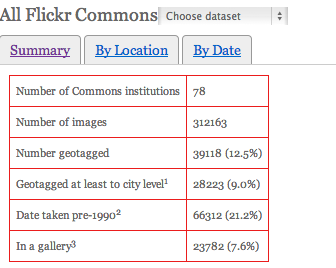In conversation with Aaron Guy (my archive guru) he recalled the Sunderland University Photography Conference from 2011 and how some talks/papers may be of use to me. I couldn’t be more grateful for his effort in helping me retrieve this information: he successfully got the webpage of the talk back online to browse. The last section of talks was called: The Versatile Image: Photography in the Era of Web 2.0. Under this heading I uncovered the paper ‘Flickr the Commons: Challenging Perceptions of Photographic Collections?
Summary of talk:
- Social Media Platforms “generate broad interest on a large scale”
- Social Media Platforms encourages user-generated content/involvement
- Creates user interest groups
- Does the user-generated content disrupt the power of curators/archivists alike?
Authors:
- Bronwen Colquhoun PhD in picture-sharing websites and involvement with communities.
- Areti Galani
Flickr The Commons was launched January 16th 2008 with partnership with the Library of Congress “and has since developed to host the photographic collections of a fifty-one museums, galleries, libraries and archives (as of 22nd May 2011) […] Institutions are expected to upload historic photographs under the ‘no known copyright’ restriction” (page 2). This means that publicly funded works are expected not to be copyrighting the work which is available to all, increasing its state of ‘freeness’.
There were 312163 photographs uploaded by institutions by January 2014, of which 39118 (12.5%) is geotagged. What is discussed in the Flickr The Commons talk is how there is a tension of whether the user-generated tagging and cataloguing is disrupting the power of the curator and archivist. This is an interesting point; users can select images and put them in folders with other images which may not have come from the same collection of work. Does this matter? Or are users threatening the validity of the information behind the images? It’s an awkward one, especially as there is no denying of the power of the people: Flickr the Commons encouraged the Flickr community to become detectives to identify locations of images in the Library of Congress archive: this was apparently very successful.
So to what extent should users be able to affect the behaviour of the archives? This is a whole other question, that for the purpose of my research for “does archive information want to be free,” is not so relevant. However, it is needless to say that a platform like Flickr the Commons does go far and beyond what it means to be libre and gratis in terms of photographic discourses in the public domain. Users can tag, comment and add to their own collections to make sense of the photographs. I recall reading a blog about website usability and design and how users prefer familiarity. So loading archives onto a platform which already is understood by users seems to be a good choice.
This paper as a source
This paper’s purpose is to discuss the tension of users and open photography archive platforms. This isn’t directly what I am looking for; however, what I am taking from it is this:
- Identifying that public archives are adopting this platform to communicate to and with audiences
- Knocking the barrier of who can look at archives (not just researchers)
It has also helped me look for other research such as finding this API which calculates the number of images in the Commons etc.
